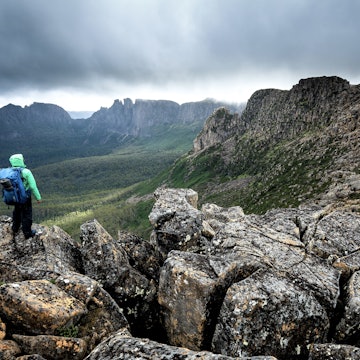

Reykjavík has several public geothermal pools to soak in for free © tipwam/Shutterstock
The Icelandic capital is often ranked one of Europe’s most expensive cities, but it's not without its bargain side – there are plenty of free things to do in Reykjavík too.
As a rule of thumb, see how locals spend their weekends and afternoons to find free (or almost free) experiences around town, from culture to natural excursions. Here are 11 of our favorites to get you started.

See the northern lights at Grótta
Legendary Icelandic businessman Einar Benediktsson, who constructed many iconic buildings in Reykjavík, once tried to sell the northern lights to a Danish visitor. Luckily, he did not succeed.
The auroras are visible in the months of darkness between September and April, but within Reykjavík, they're rarely strong enough to outshine the city lights. To vastly increase your chances of spotting the Arctic phenomena, caused by solar winds slamming into Earth's magnetic fields, take an hour-long walk from the city center to the beach of Grótta.
The coastal walk to Grótta is pleasant during the day too, and during low tide, it's possible to reach the iconic lighthouse on the absolute tip of Reykjavík's peninsula. Just get back before high tide!
Go for a swim at Nauthólsvík Geothermal Beach
If Nauthólsvík were located several latitudes south, its strip of yellow sand would smell of sunscreen and sangria year-round. Here, however, the scene only bursts to life during Reykjavík's precious days of beach weather.
Nauthólsvík is manufactured – yellow sand is not found naturally in southern Iceland – and labeled a geothermal beach, with warm hot tubs and a heated lagoon. It's a popular local swimming spot, especially during lunch hours and after work. The city of Reykjavík employs lifeguards and operates changing rooms free of charge from mid-May to mid-August. Winter admission is 740 króna (US$5.80).
Climb Mt Esja and admire the views
At 910m (2986ft), Mt Esja dominates the view from Reykjavík's coastline. Trekking it takes hours, but at the same time, it's manageable for most abilities.
The best paths are along the Mógilsá River up to the Þverfellshorn summit. The final stretch is steep and only accessible during summer; most hikers stop at 800m (2625ft) by a rock known as the Stone (Steinn).
Bus 57 stops by the base; getting there takes about an hour from downtown.

Visit during festival time for free entertainment
The city of Reykjavík organizes a variety of public events year-round, number one being Culture Night, or Menningarnótt, held every year around the 20th of August. Events ranging from pancake parties to street performances play out across town, concluding with a massive concert by the harbor. Expect fireworks!
Other guaranteed summertime celebrations include Sailors Day in early June, National Day on June 17 and Gay Pride in August; there's also the Winter Lights Festival in February and the Children's Culture Festival in April.
For upcoming events, pick up a copy of the Reykjavík Grapevine, the city's largest English-language publication, distributed for free around town.
Go berry-picking in Heiðmörk
Picking crowberries and bilberries is a seasonal ritual for Icelanders young and old. In Reykjavík, many head to the Heiðmörk Nature Reserve at the edge of town with empty buckets and empty stomachs, typically from mid-August to mid-September. The area is vast and flat, popular for cycling and walking. Mushrooming is possible here too.

Join a walking tour to learn about Icelandic history
Led by a witty local through downtown monuments and buildings, walking tours are a popular way to explore Iceland's history. Just note that these tours are generally advertised as free, but the guides rely on tips – in other words, they do cost.
The two largest operators – CityWalk and Your Friend in Reykjavik – offer two-hour walks throughout the day, at least during the summer. Tours tailored to runners, foodies and music lovers are also available; check out the Airbnb Experiences platform for a wide selection.
Spend a rainy day playing at the Nordic House
An architectural landmark by the University of Iceland campus, designed by the acclaimed Finnish modernist architect Alvar Aalto, the Nordic House has an excellent indoor playroom for young children, located in the basement, with Legos from Denmark, Mumin characters from Finland, wooden Ikea toys from Sweden and books about elves and trolls from Iceland and Norway.
The institution also hosts several events and exhibitions year-round and has a restaurant known for New Nordic cuisine.
Commune with nature at the Einar Jónsson Sculpture Garden
Across the street from the landmark Hallgrímskirkja church is a quiet sculpture garden featuring the works of renowned 20th-century artist Einar Jónsson, who once lived in the attached museum building and curated much of the garden with his wife, Anna. Museum admission is 1500kr ($12), but the outdoor area is always open and free.

Admire the architecture at Harpa concert hall
Completed in 2011, Harpa is a modern landmark in Reykjavík. Icelandic-Danish artist Ólafur Elíasson designed the distinguished glass façade, inspired by the natural basalt columns found in the Icelandic landscape.
The building hosts conferences and events, but visitors are always welcome inside to look at the award-winning architecture.
Take a dip in a geothermal pool
Hot water is one of the few things Icelanders pay less for than the average European. Thanks to the abundant geothermal supply, there are 17 public pools in and around Reykjavík. All but one are outdoors, with multi-temperature hot tubs and saunas, open from early morning to evening.
The three pools in comfortable walking distance from the city center are Sundhöllin, Vesturbæjarlaug and Laugardalslaug. For smaller crowds, we recommend Sundlaug Seltjarnarness, Árbæjarlaug, Grafarvogslaug and the new Dalslaug.
















